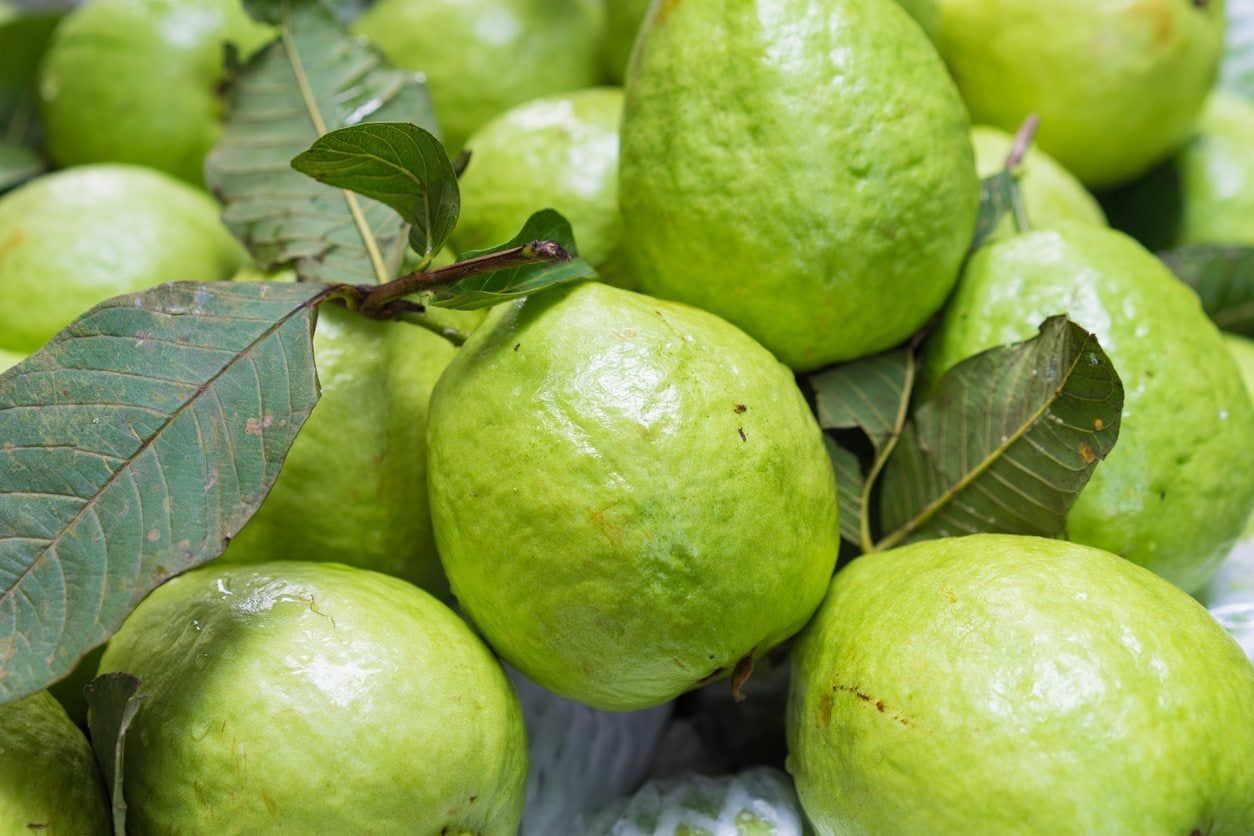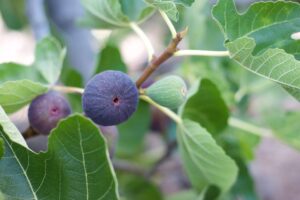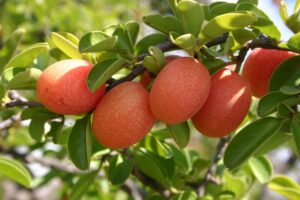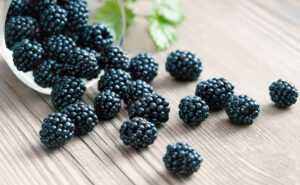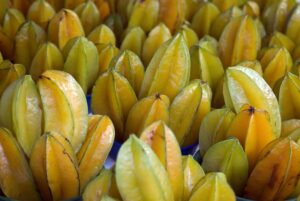How to Grow and Care for Guava: A Complete Guide
Are you interested in growing your own tropical fruit at home? Guava (Psidium guajava) might be the perfect addition to your garden or indoor plant collection. With its sweet, aromatic fruits and attractive foliage, guava trees can thrive in various settings across the United States, particularly in USDA hardiness zones 9-11. This comprehensive guide will walk you through everything you need to know about growing and caring for guava plants in your garden, in pots, or outdoors from seed.
Understanding Guava Plants
Guava is a small tropical tree or shrub native to Central and South America but now cultivated worldwide in tropical and subtropical regions. Before diving into cultivation methods, let’s understand what makes guava an excellent choice for home gardeners:
- Adaptability: Guava plants can thrive in various environments with proper care
- Compact size: When grown in containers, guava trees can be maintained at 6-8 feet, making them suitable for patios and small spaces
- Year-round production: In ideal conditions, guava can produce fruit throughout the year
- Nutritional value: Guavas are packed with vitamin C, fiber, and antioxidants
According to the USDA Agricultural Research Service, guava is one of the most nutritious fruits available, containing more vitamin C than oranges.
Growing Guava from Seeds
Starting guava from seeds is an economical and rewarding method, though it requires patience as seed-grown trees may take 3-8 years to produce fruit.
Seed Collection and Preparation
- Select ripe guava fruits from a reliable source or local market
- Cut the fruit in half and scoop out the seeds
- Rinse the seeds thoroughly to remove all pulp
- Dry the seeds on a paper towel for 1-2 days
Germination Process
- Soak the dried seeds in warm water for 24-48 hours to soften the seed coat
- Prepare small pots with well-draining potting mix
- Plant seeds 1/4 inch deep, spaced about 1 inch apart
- Keep the soil consistently moist but not waterlogged
- Place the pots in a warm location (75-85°F/24-29°C)
- Germination typically occurs within 2-8 weeks
Seedling Care
Once your guava seedlings have developed 2-3 sets of true leaves:
- Transplant them into individual 4-6 inch pots
- Place them in a location with bright, indirect light
- Water when the top inch of soil feels dry
- Begin fertilizing with diluted balanced fertilizer every 4-6 weeks
Growing Guava in Containers
Container growing is ideal for regions with cold winters or limited garden space. It also allows you to move plants indoors during harsh weather.
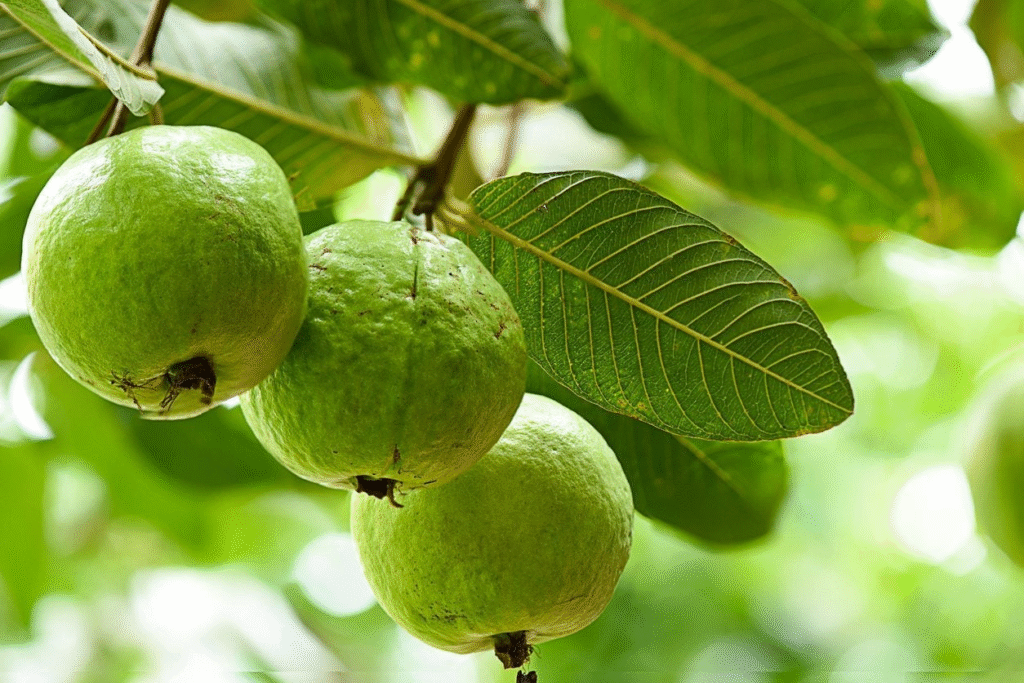
Selecting the Right Container
- Choose a container at least 16-20 inches in diameter with good drainage
- Ensure the pot has multiple drainage holes
- Terra cotta pots work well as they allow moisture to evaporate
- For larger plants, consider half-barrel planters or similar large containers
Potting Mix for Container Guava
Create a well-draining potting mix by combining:
- 1 part quality potting soil
- 1 part perlite or coarse sand
- 1 part compost or well-rotted manure
This mix provides the drainage guava roots need while retaining enough moisture and nutrients.
Container Care Guidelines
| Care Aspect | Requirements | Frequency | Notes |
|---|---|---|---|
| Watering | Moderate | When top 1-2 inches of soil dries | More frequent in summer, less in winter |
| Fertilizing | Balanced (10-10-10) | Every 4-6 weeks during growing season | Reduce to every 2-3 months in winter |
| Sunlight | Full sun to partial shade | 6-8 hours daily | Protection from harsh afternoon sun |
| Temperature | 65-85°F (18-29°C) | Year-round | Move indoors when below 50°F (10°C) |
| Pruning | Light to moderate | Annually | Best done after fruiting |
| Repotting | As needed | Every 2-3 years | When roots become pot-bound |
Outdoor Cultivation in Gardens
If you live in USDA zones 9-11, you can grow guava directly in your garden for larger trees and potentially greater yields.
Site Selection and Preparation
- Choose a location with full sun exposure (minimum 6 hours daily)
- Ensure good air circulation but protection from strong winds
- Test soil pH – guava prefers slightly acidic to neutral soil (pH 5.5-7.0)
- Incorporate 2-3 inches of compost into the planting area
- Ensure good drainage; consider raised beds in areas with heavy clay
Planting Process
- Dig a hole twice as wide and as deep as the root ball
- Gently remove the plant from its container, being careful not to disturb the roots
- Place the plant in the hole at the same depth it was growing previously
- Backfill with soil mixed with compost
- Water thoroughly to settle the soil
- Apply 2-3 inches of mulch around the base, keeping it away from the trunk
Ongoing Garden Care
Watering
Young guava trees need regular watering to establish strong root systems. Water deeply once or twice weekly during the first year. Established trees are somewhat drought-tolerant but produce better with consistent moisture. Use drip irrigation when possible to minimize leaf wetness.
Fertilization
Apply a balanced fertilizer formulated for fruit trees:
- Young trees: Apply 1/4 pound of 10-10-10 fertilizer every two months
- Mature trees: Apply 1 pound per year of tree age (up to 10 pounds maximum) divided into 3-4 applications
Pruning and Training
Guava responds well to pruning, which helps maintain size and improve fruit production:
- Formative pruning: During the first 2-3 years, establish a strong framework by selecting 3-5 main branches
- Maintenance pruning: Remove dead, diseased, or crossing branches annually
- Production pruning: After harvest, trim back fruiting branches by about one-third to encourage new growth
Protection from Cold
If you’re growing guava near the edge of its hardiness range, provide cold protection:
- Cover young trees with frost cloth when temperatures approach freezing
- Install outdoor heating lamps for additional warmth
- Apply a thick layer of mulch to protect roots
- Consider constructing temporary greenhouse structures for severe cold snaps
Common Pests and Diseases
While guava is relatively hardy, it can face certain challenges:

Pest Management
- Fruit flies: Use yellow sticky traps and bag developing fruits
- Scale insects: Apply horticultural oil or insecticidal soap
- Mealybugs: Treat with neem oil or introduce beneficial insects
- Birds: Use netting to protect ripening fruit
Disease Prevention
- Root rot: Ensure proper drainage and avoid overwatering
- Anthracnose: Remove and destroy affected plant parts; apply copper-based fungicide
- Guava wilt: No effective chemical control; focus on prevention through clean cultivation practices
- Algal spot: Apply copper fungicides during humid conditions
The University of Florida IFAS Extension provides additional resources on managing guava pests and diseases specific to the U.S. climate.
Harvesting and Using Guava
The reward for your care comes at harvest time. Here’s how to know when your guavas are ready:
Harvesting Indicators
- Color change from dark green to light green or yellow (variety dependent)
- Slight softening when gently pressed
- Sweet aroma development
- Fruits detach easily with a slight twist
Post-Harvest Handling
Guavas continue to ripen after picking. For best results:
- Handle fruits gently to prevent bruising
- Store at room temperature to complete ripening
- Refrigerate ripe fruits for up to one week
- For longer storage, freeze puréed guava or prepare preserves
Culinary Uses
Your homegrown guavas can be enjoyed in numerous ways:
- Fresh eating: Simply cut and enjoy
- Smoothies and juices: Blend with other fruits for tropical flavor
- Preserves and jams: The high pectin content makes guava excellent for preserves
- Baked goods: Add to muffins, cakes, and pastries
- Savory dishes: Use in salsas or as a glaze for meats
- Dried guava: Slice thinly and dehydrate for a nutritious snack
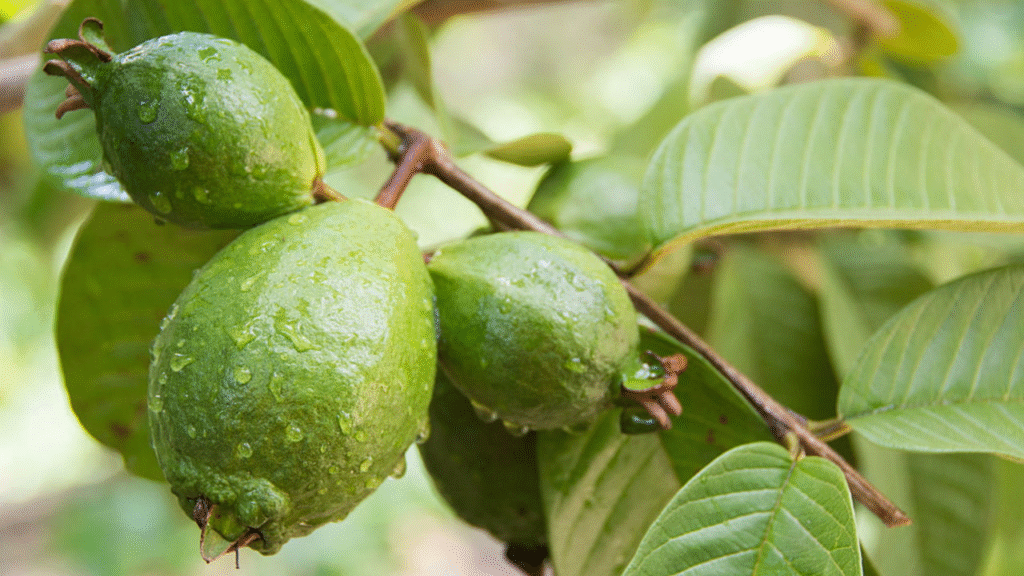
Growing Guava in the US Market
The commercial guava market in the United States is primarily centered in Hawaii, Florida, and California. However, with increasing consumer interest in exotic fruits, there’s growing potential for small-scale and specialty growers across southern states.
Market Opportunities
The U.S. market for guava includes:
- Farmers’ markets and local food co-ops
- Specialty grocery stores catering to diverse communities
- Direct sales to restaurants featuring international cuisines
- Value-added products like guava paste, preserves, and dried fruit
Challenges for US Growers
- Climate limitations: Most of the continental US is too cold for year-round outdoor cultivation
- Competition: Imported guavas from Mexico, Thailand, and other tropical countries
- Awareness: Many US consumers are still unfamiliar with using fresh guava
- Pest regulations: Some states have restrictions on growing tropical fruit to prevent spread of fruit flies
Conclusion
Growing guava can be a rewarding experience whether you’re cultivating a single container plant on a balcony or establishing a small orchard in a southern garden. With proper care and attention to the plant’s basic needs, you can enjoy this nutritious tropical fruit straight from your own garden. Remember that climate adaptations will be necessary in most parts of the United States, but with the right approach, you can successfully grow this delicious fruit at home.
Start with high-quality plants or seeds, provide the appropriate growing conditions, and be patient—your guava growing journey will reward you with fragrant blossoms and sweet, nutritious fruits that are rarely found in typical grocery stores. Your homegrown guavas will likely be more flavorful and nutritious than commercially produced fruits that are often harvested prematurely for shipping.
Whether you’re an experienced gardener looking to try something new or a beginner attracted to the idea of growing tropical fruit, guava is an excellent choice that combines ornamental value with culinary rewards.
